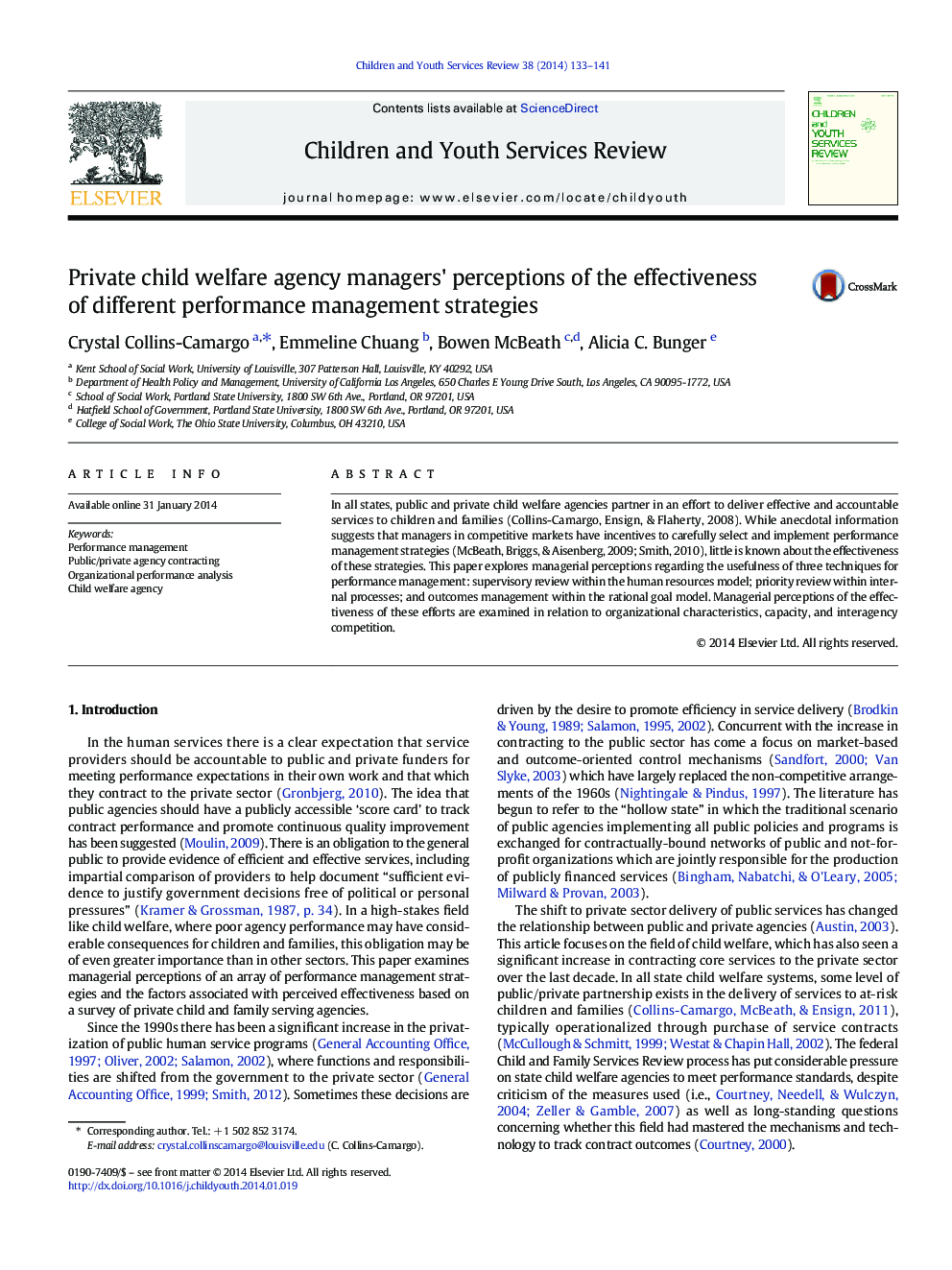| Article ID | Journal | Published Year | Pages | File Type |
|---|---|---|---|---|
| 346202 | Children and Youth Services Review | 2014 | 9 Pages |
•Ratings of the effectiveness of performance measurement strategies were high.•Priority and supervisory review and outcomes management were rated most effective.•Frontline worker understanding of performance indicators was related to perception.•Private agency competition is associated with performance management perceptions.•These relationships may inform efforts to promote overall system performance.
In all states, public and private child welfare agencies partner in an effort to deliver effective and accountable services to children and families (Collins-Camargo, Ensign, & Flaherty, 2008). While anecdotal information suggests that managers in competitive markets have incentives to carefully select and implement performance management strategies (McBeath, Briggs, & Aisenberg, 2009; Smith, 2010), little is known about the effectiveness of these strategies. This paper explores managerial perceptions regarding the usefulness of three techniques for performance management: supervisory review within the human resources model; priority review within internal processes; and outcomes management within the rational goal model. Managerial perceptions of the effectiveness of these efforts are examined in relation to organizational characteristics, capacity, and interagency competition.
